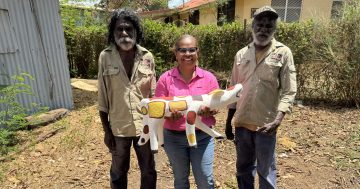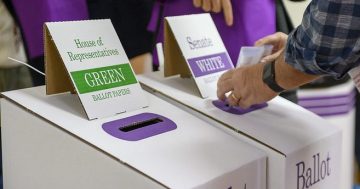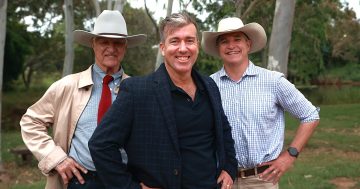
The corflutes are out and the ballot order decided in the battle for Cook, with one academic saying there is a demonstrated benefit to having your name at the top – or bottom – of the ballot paper. Photo: Cape York Weekly.
Katter’s Australian Party (KAP) candidate Duane Amos says he is “pretty pumped” to have taken top spot on the Cook ballot paper for this month’s state election following the order draw on 9 October.
The draw was held last week after the declaration of nominations, with five candidates set to battle for the northernmost electorate in Queensland.
Mr Amos will appear at the top of the ballot paper for KAP, with the Liberal National Party’s David Kempton drawing second spot, incumbent Labor MP Cynthia Lui third, One Nation’s Peter Campion fourth and Troy Miller taking fifth position for the Greens.
The KAP candidate said he was happy to hold the number one spot on the ballot paper, but hoped his work on the ground during his campaign would play a more important role in people casting their vote for him.
“I’m pretty pumped, really,” he said.
“It’s not often those things happen that way, but I’d like to think the hard work I’ve done on the ground will make the biggest difference when people vote.
“That said, we do know there is a benefit to being in the number one spot on the ballot paper.”
The position a candidate appears on a ballot paper and its effect on votes has long been debated, and Emeritus Professor John Warhurst from Australian National University’s School of Politics and International Relations said there was some evidence being at the bottom of the ballot paper could also allow candidates to pick up donkey votes, where electors were making a random selection at the polls.
“There are some academic studies on the so-called donkey vote which conclude that first place on the ballot paper could be worth up to 2 per cent,” he told Cape York Weekly.
“Being at the bottom is also thought to be a good position.
“It means that how-to-vote cards can be clear and easily followed; how-to-vote cards do make a difference and favour major parties, who have volunteers to help hand them out.
“Drawing positions on the ballot paper, rather than alphabetical order, was brought in to try to help eliminate the donkey vote.”











